Muddled thoughts or brain fog? These words will probably make those who have ever had the dubious pleasure of experiencing a concussion think back to the rather unpleasant experience, happy to have it behind them. We’re not immune to them either, and are here to help with a few tips.
Our brain, grey matter, command centre, call it what you want: without it, we’re nothing. It constantly processes all kinds of stimuli, external and internal influences, and thus creates the reality which we perceive and move in. We usually don’t notice any of this happening. And neither do we notice a headache, having learnt to wait for it to pass, or to remedy it with a painkiller. This perhaps explains why head injuries often go undetected because they don’t always affect you as immediately as a broken arm or a nasty bruise.
The fact that our thinking apparatus is our most important body part and that we should therefore cherish and care for it often gets neglected in everyday life. However, you shouldn’t take serious brain injuries lightly. Unfortunately, the two cycling pros Kate Courtney and Tahnée Seagrave as well as Pinkbike’s Alicia Leggett recently threw some perhaps needed light on the delicate topic with their own concussions. Thanks to long breaks and good medical care, the ladies are fortunately back in the saddle, but they have definitely shown us that supposedly harmless concussions need as much time and attention – if not more – to heal as a bone fracture or ruptured ligament.
But how do we know now when a head injury is serious and it isn’t just the weather, last night’s drinks, or something else to blame? We’ve taken a look at the topic from a biker’s perspective to raise your awareness about it and show you what to do when the worst comes to worst.

You’ve fallen on your head – now what?
So, it happened. You momentarily lost control of the bike, couldn’t get your hands out in time, and crashed on your head. The helmet is broken, your head is pounding. So what now? Try to stay calm and, if possible, get off the trail. If you’re on your own, you should seek help as soon as possible. Contact your buddies, call the bike patrol in the bike park, or stop other riders and ask for help because it can take a while for the effects of a concussion to kick in.
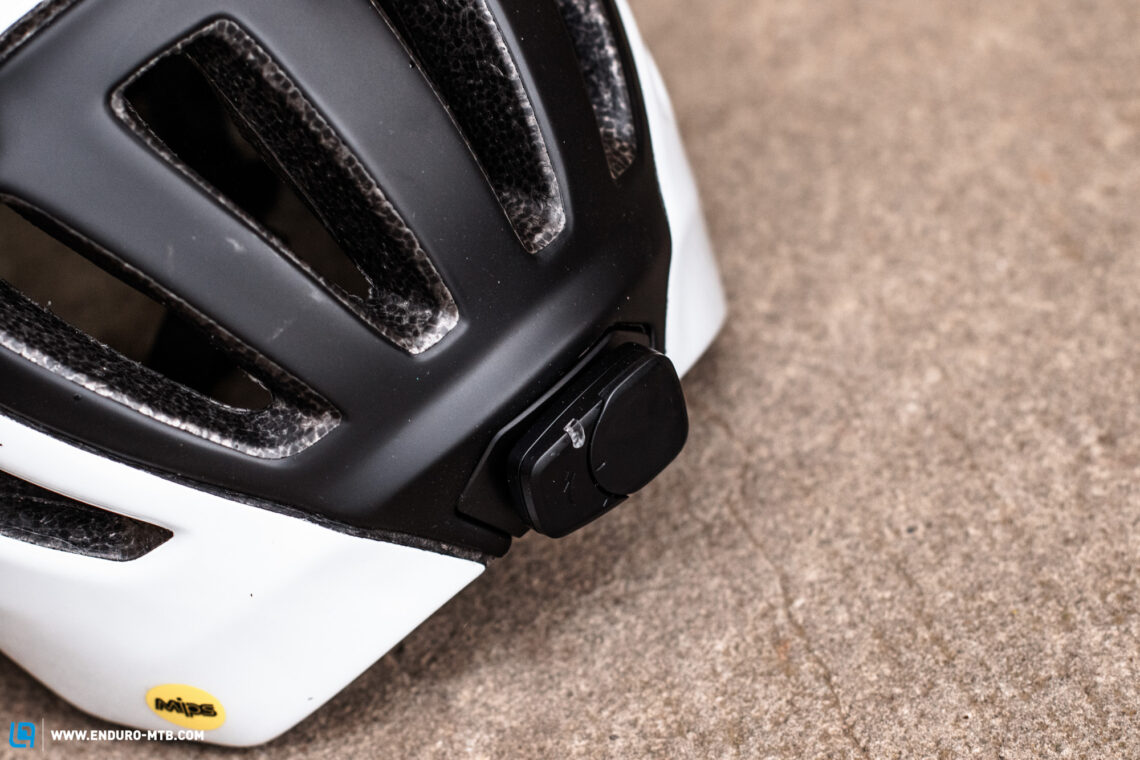
The ANGi system from Specialized is attached to the helmet and automatically starts a countdown in the event of a crash, notifying your contacts unless you respond.
If you’re the witness of a head-first dive bombing, the first order of the day is also to stay cool, calm, and collected. If the rider can’t get up, secure the trail as well as possible and warn approaching riders. If the victim is knocked out, call the paramedics and stand by until they’re on site.
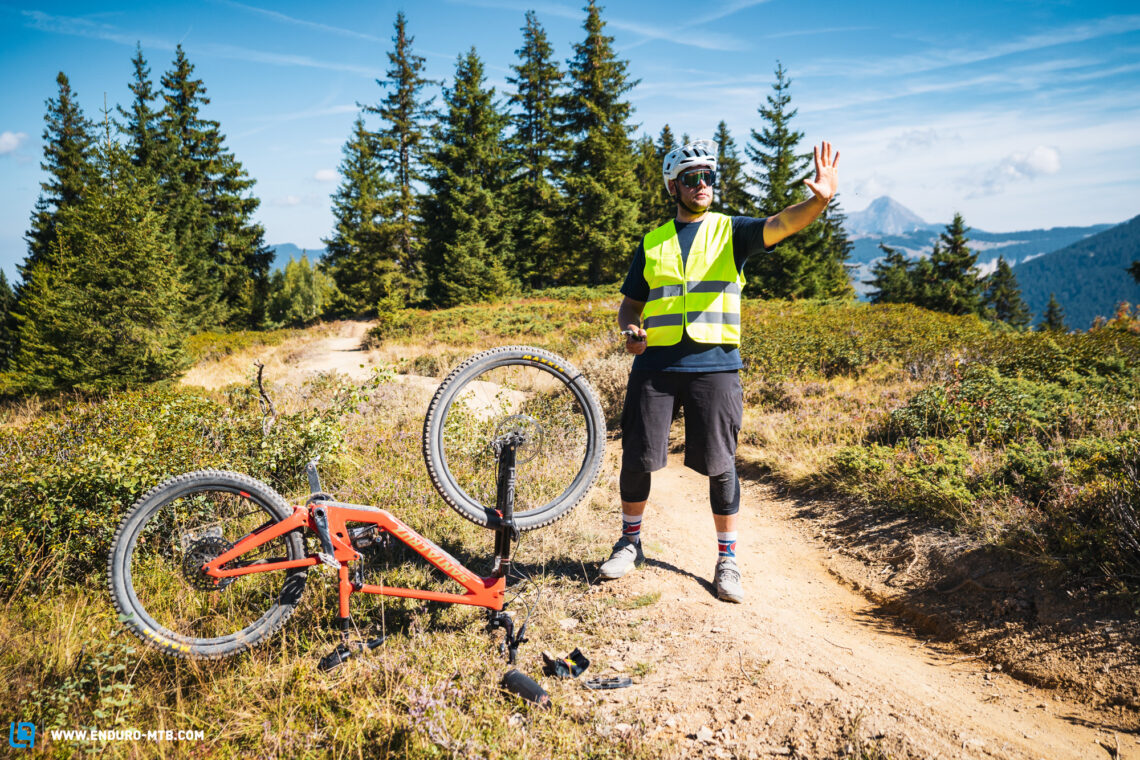
If the victim responds, then first check their orientation. This is where the three “Ws” will help:
- who am I,
- where am I,
- and what happened?
If a person can no longer answer these questions, they should definitely be checked by a healthcare professional! Also, looking at the eyes – or more precisely the pupils – will provide an indication of whether there may be an underlying injury. If your buddy has trouble following objects – such as your finger – or if the pupils have a different size or shape, you should call for medical help immediately.
Also ask if the person feels sick or dizzy. In case of severe nausea or even vomiting, you should head directly to the nearest doctor, hospital, or bike park medics. It’s best to do so on foot while supporting the victim. Better yet, let the help come directly to you – rather safe than sorry!
If the vital signs are safe, sit in a shady spot for 15 to 20 minutes and follow what’s happening on the trail. If you still feel okay after that, you can start heading home carefully. If your head throbs and the pain doesn’t subside, there is no shame in calling it a day and giving yourself some time out. Rest to ride another day.
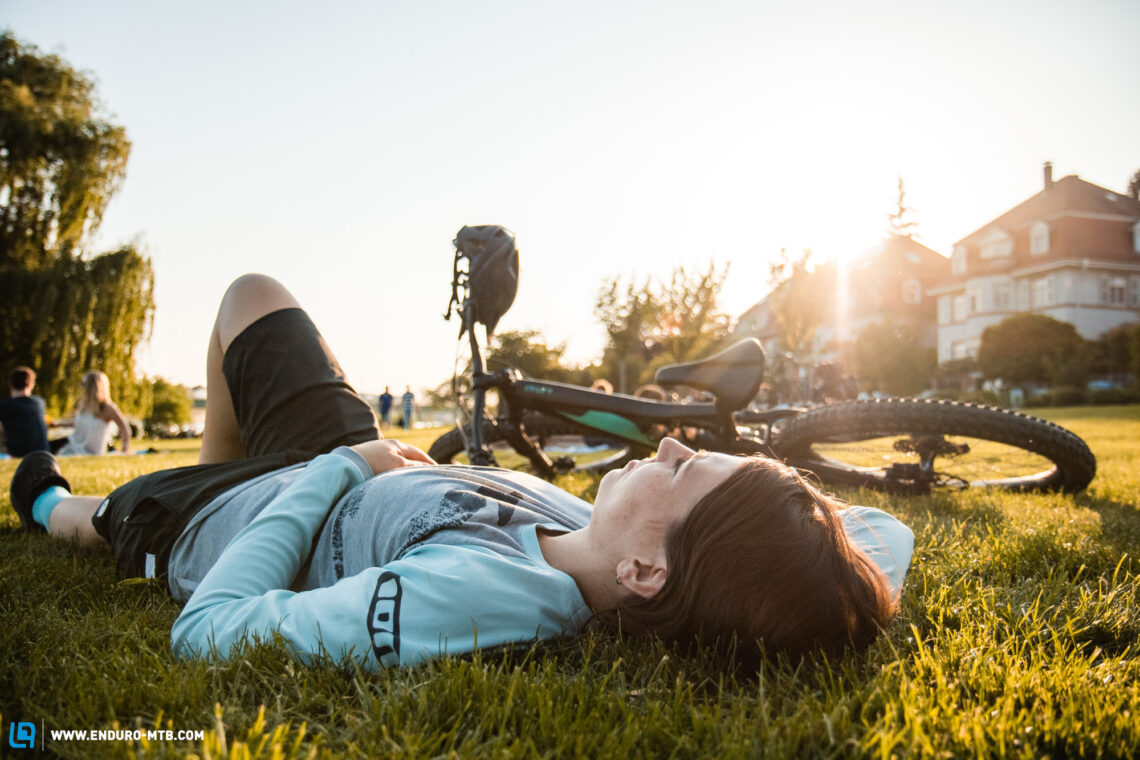
Rude awakening? The day after the crash
You wake up feeling like you had a rough night, and it’s clear you’ve had a hefty blow to the head. After a crash involving your head, listen to your body:
- Is the morning grogginess lasting longer than usual?
- Do you feel less resilient and more stressed or forgetful?
- Are you sensitive to loud noises and bright light?
In that case, your brain is telling you that something isn’t right, and it needs time to recover. The best way to do that is to get some rest. Make yourself comfortable at home or in a quiet, comfortable place, take a nap or let your thoughts wander. Avoid screens, be it the TV, laptop, or smartphone, and treat your brain to a much-needed break from constant stimuli instead. This is good for it and helps it to recuperate – not just after a crash, by the way.
Listen to Baloo the bear, forget about your worries and your strife and let the bare necessities of life come to you. Don’t jump right back into your job or onto your bike; give yourself the time to do one task at a time. Now is the time to finally reduce your screen time. You’ve been wanting to do so for a long time anyway, haven’t you? Most importantly, stay cool, don’t get stressed, and just listen to your body. You will feel when your brain is ready to get back to work at the same level as before. Until then, time is your friend. Take it!
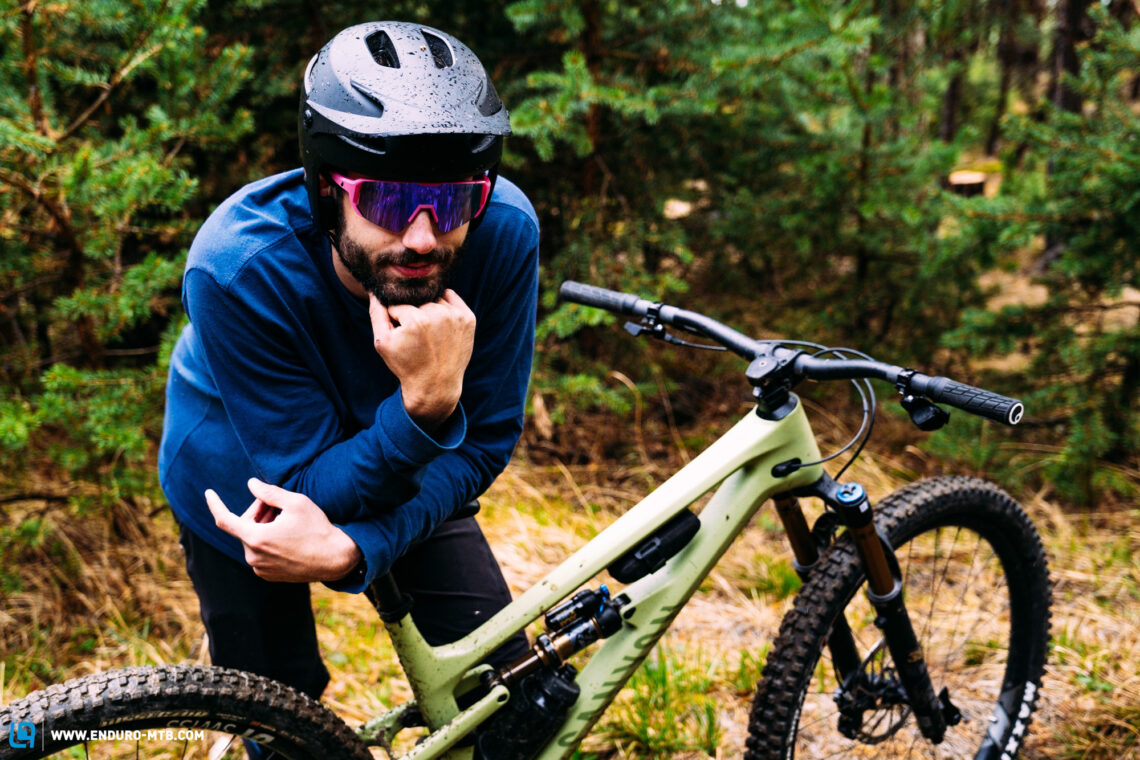
Be prepared!
Avoiding the inevitable – is it even possible? Since our hobby is more about when and not whether you will crash, preparation is key, as always. Like wearing a safety belt in a car, wearing a helmet on your bike is mandatory. At least it is for us. After all, our grey matter won’t grow back and it’s far too precious to scatter on the ground.
A good helmet must meet some other criteria besides style. Check out our big helmet group test to find out exactly what to look for.
In addition to a decent helmet, a good warm-up is a must before every ride. Stretch your large muscle groups thoroughly before setting off: your legs, arms, back, core, and neck will thank you with smooth reactions on the trail. There is a great warm-up exercise you can do for your eyes, too, courtesy of our friends in blue: with outstretched arms and your thumbs pointed upward, alternate between your left and right arm as you move it from the front to the side, following the tip of your thumb with your eyes. Keep your head as straight as possible. This warms up the eye muscles and stimulates the coordination between your eyes and your body. Your brain also gets a little warm-up for the upcoming ride.
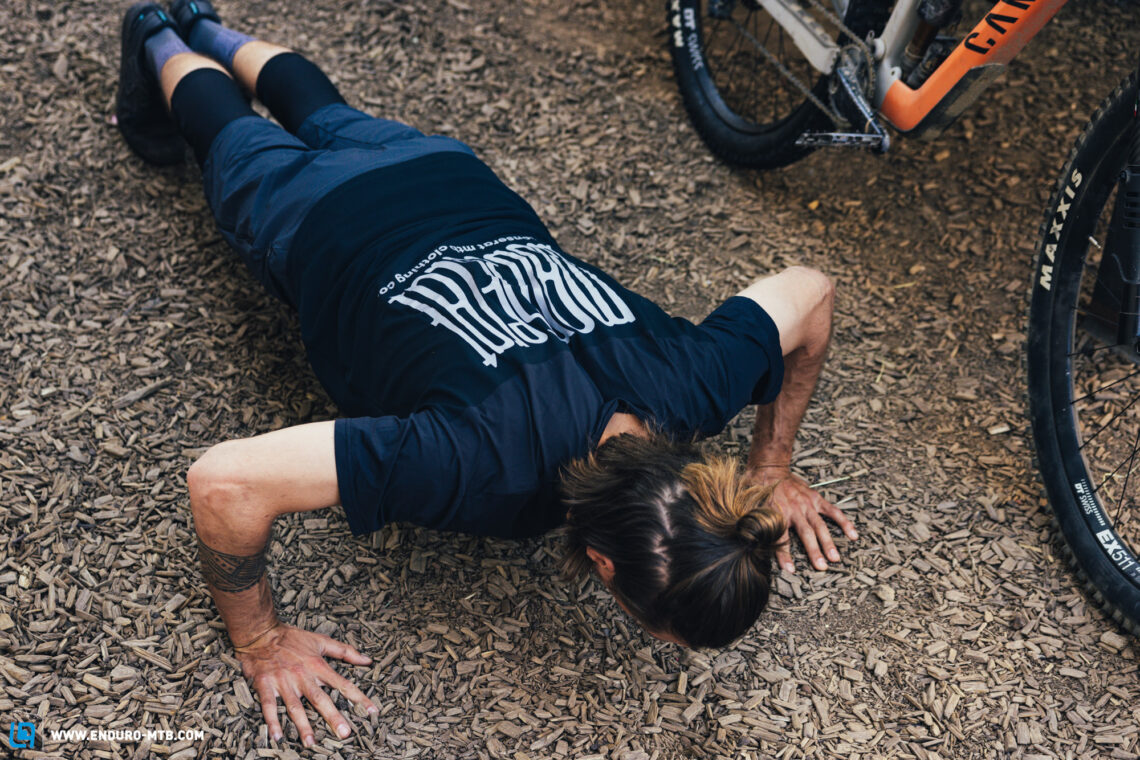
Push-ups are a great way to warm up.
Dare to push your limits, but don’t rely too blindly on your talent. Attending an occasional skills camp, and regularly going on rides with a focus on your technique will sharpen your sense of safe and controlled riding, and give you that good feeling of progression as you fine-tune your abilities. Those who don’t ride at the limit can make more conscious decisions while riding and understand the effects of their actions. Doing so also provides a certain margin for error, in case things get wild. By the way: Safe is fast and fast is fun. That’s what it’s all about, hey?
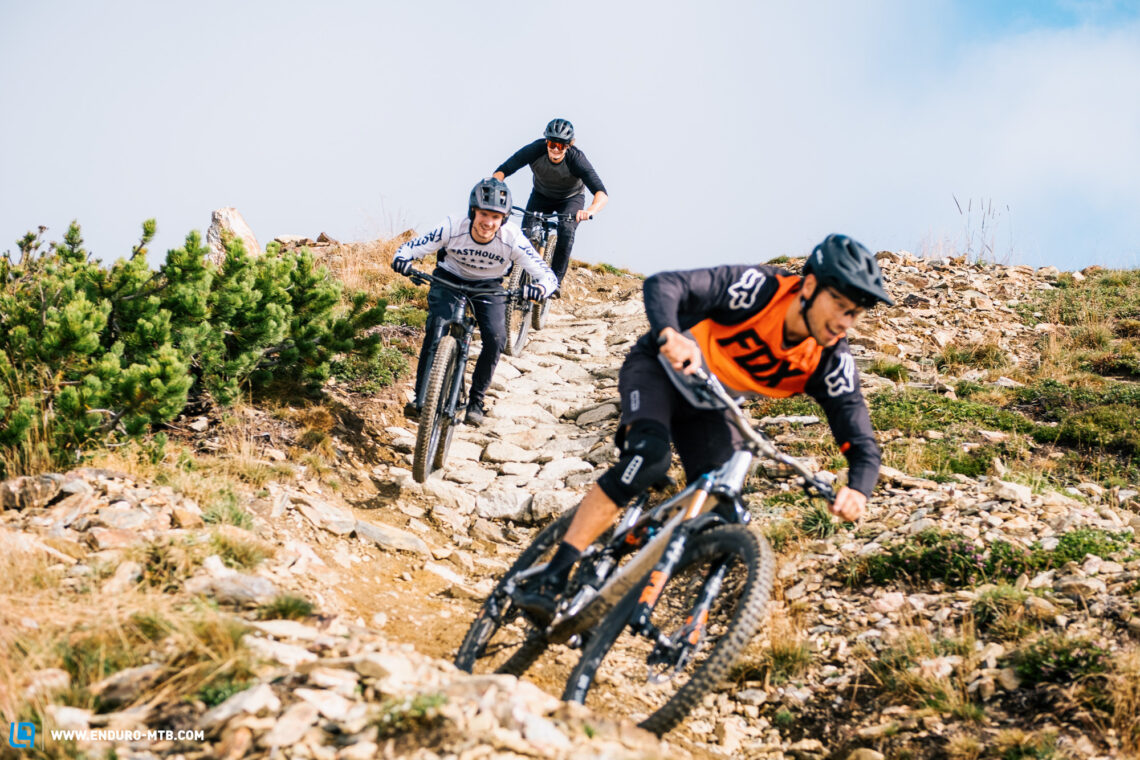
Keep your head up!
Don’t overthink it: You can’t eliminate the risk of concussions, but you can do a lot to prevent them. Prepare your body for the bike season, warm up properly, learn the trail (pre-ride, re-ride, freeride – remember?), and use the right protective gear. A positive attitude as well as confidence in your body, skills, and your bike will always serve you well. Don’t let the thought of a crash put you off, but rather use it as motivation to get even better. After all, we don’t call it the best hobby in the world for nothing. So, get out on your bike – riding is therapy!
Did you enjoy this article? If so, we would be stoked if you decide to support us with a monthly contribution. By becoming a supporter of ENDURO, you will help secure a sustainable future for high-quality mountain bike journalism. Click here to learn more.
Words: Valerio Kallmann Photos: Various









